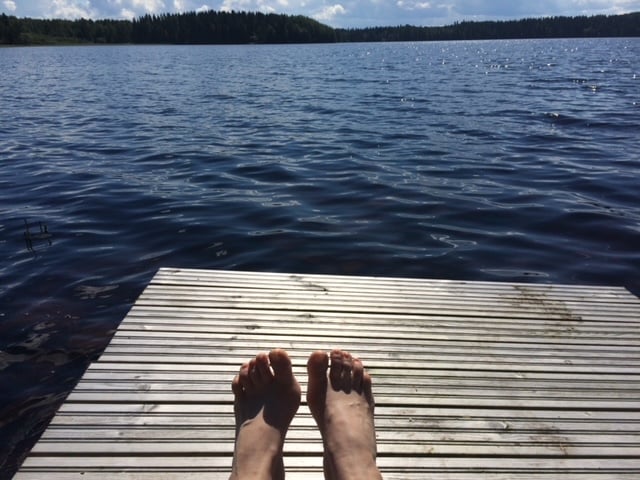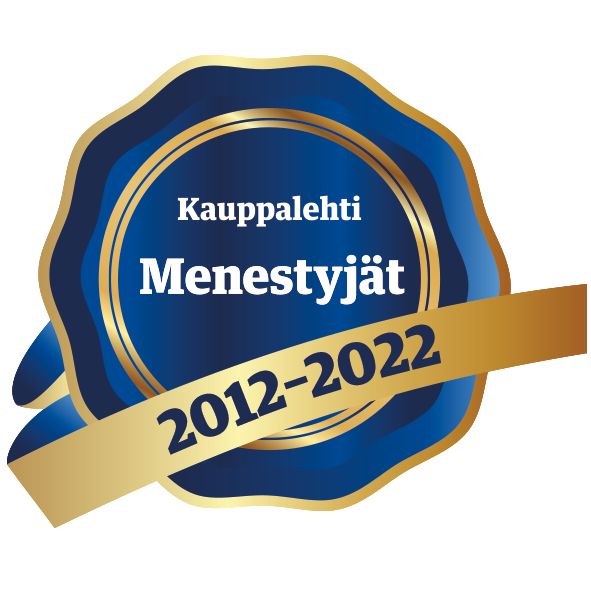Finnish summer traditions are very special. Sometimes so special it’s hard to describe them to outsiders in English. How can you find the exact words for traditional Finnish things such as:
Lonkero, tynnyrisauna, vihta, mäkäräinen, kassler, mölkky, talkoot, löyly?
This blog is here to help you!
 Let’s go through the key traditions that make Finnish summer special - and find the closest available English words to best describe the beauty of this special time of year.
Let’s go through the key traditions that make Finnish summer special - and find the closest available English words to best describe the beauty of this special time of year.
The summer cottage and its activities
Finnish summer kicks off with Juhannus, which although it is related to their religious day of Saint John, is best known in English as Midsummer. Midsummer was celebrated long ago in English speaking countries relating to the summer solstice, the longest day, but is unfortunately no longer a holiday.
In Finland a Finnish family may visit their own or a friend’s summer cottage (UK) or cabin (USA) to celebrate Midsummer. This may involve building and lighting a midsummer bonfire, raising the Finnish flag on the flagpole or an official pennant (viiri).
The friends or family gathered may each contribute to the cooking and food known as a “potluck dinner” (USA) or ”bring your own.” (UK). “Bring your own” or “BYO” is also exactly how “OPM/oma pullo mukaan” is referred to in English.
The friends and family may swim, or sunbathe on the jetty where they dock their rowing boat, motor boat, or even pedalo. They may also prefer a lighter way to cross the water such as a SUP board or a kayak.
At the cottage they could play games such as badminton or traditional Finnish games such as Finnish skittles (mölkky) or bullseye darts.
The group may even organize a “talkoot”. This is one of many Finnish traditions that is very hard to fully translate in English. Perhaps it is best described as a “collective project”. The closest similar traditions in English speaking countries are “frolics” or “rearing” used by communities such as the Amish or Hutterites to build barns or complete a large project as a community. As you can see this collective spirit is rather far from the English mainstream.
However, a real Finnish summer contains three essential elements – sauna, barbecue and mosquitoes
Sauna

Sauna is one area where English is truly lacking in terms. As you can see even the word “sauna” is taken from Finnish.
A traditional sauna has “benches”, a “bucket”, and a “stove”. Although stove is a very general word in English for any kind of wood/coal heating device and not specialised for a sauna. We would say that the sauna fills up with “steam”, although this is the same word we use for cooking and engines. Again, we don’t have a specialised term. Talking about sauna accessories such as “vasta/vihta” or “saunatuoksu” is even more complicated. There are no special words and a long explanation such as “birch branches for strong massage“ or “sauna steam fragrance” may be needed.
The names for different types of saunas can be translated literally – “a tent sauna/ a smoke sauna / a barrel sauna / a platform sauna“ - BUT they may still need some explanation to foreigners who are not familiar with the concept.
Barbecue food and drink
Summer is a great barbecuing season. Note that “barbecue” is used for the outdoor grilling over charcoal. “Grill” is more often used in English for indoor grilling.
Many cuts of meat are easily translated such as “tenderloin” (sisäfile), “sirloin” (ulkofile), “shortloin” (välifile) and of course “entrecote”. The meat cut of “kassler” is much harder to convey. The official name is “gammon” from the UK, but a British gammon is far saltier and less flavoured than a Finnish “kassler”. Again, this is a term that may have to be explained or even better just tasted!
The term “sausages” can be confusing. Most Finnish sausages would be called “sausages” by Americans but “frankfurters” or “pre-cooked sausages” by Brits. If a Brit refers to a sausage it will be a wurst style sausage made with uncooked meat.
Common summer drinks in Finland include “pale ales”, “squashes” and the usual range of sprits and cocktails. Two special Finnish drinks that should be tried are “lonkero” and “kotikalja”. Both have no direct English equivalent. A “lonkero” is a great Finnish invention but it is not a traditional gin and tonic or long cocktail (cocktails deriving from Long Island, New York). Perhaps lonkero could be best described as a “long gin drink”. Kotikalja is sometimes translated as “homebrew” but this is misleading as it implies an alcoholic drink such as “sahti”. The closest word in English is the Russian “kvass” but again a Finn may have to explain the difference between “kvass” and “kotikalja.”
Mosquitos
Last but not least, the great pests of the Finnish summer – the biting insects.
There are three types of common biting insects in Finland, ranging in size from the “black fly” (mäkäräinen) to the “midge“ (sääski) to the “mosquito”. Many foreign visitors may have encountered the “black fly” and “midge” but the actual “mosquito” may be new for them. Tourists from Central and Southern Europe may have very little resistance to these mosquito bites and get large swollen bites. The Finnish mosquito is not to be underestimated!
With these key terms we hope you explain the wonders of a Finnish summer to everyone. You are welcome to download, free of charge, Galimatias’ enclosed summer vocabulary.
Wishing you a wonderful summer from Galimatias!
More of Claire´s blogs here.




